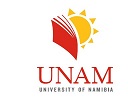Day 1 :
Keynote Forum
Abul Mandal
University of skovde,Sweden
Keynote: Genetic engineering of tobacco plants by expressing arsenic responsive genes of Lysinibacillus sphaericus and Arabidopsis thaliana for removal of arsenics from the contaminated lands
Time : 09:45-10:45

Biography:
Abul Mandal has completed his PhD from University of Agriculture in Cracow, Poland and Postdoctoral studies from University of Stockholm, Sweden. In 2010, he was appointed as a Professor of Molecular Biology at the System Biology Research Center of the University of Skövde, Sweden. Currently, he is heading the Biotechnology Research Group at the same university. He also functions as the Academic Coordinator of the School of Bioscience. He has three patents that have already been granted by the United States Patent and Trademark Office (USPTO) in the USA and one PCT patent that has been granted by the Patent Office in India. He has also published more than 100 papers in reputed peer reviewed journals. Since 2010, he has been serving as an Editorial Board Member of several scientific journals.
Abstract:
Contamination of foods and water with heavy metals, such as arsenic is a severe threat to human health and the environment. Long-term exposure to arsenic leads to chronic poisoning of human health and results in severe diseases such as keratosis, gangrene, kidney damage, neurovascular disorders and many forms of cancer. In this paper we report our recent results on genetic engineering of tobacco plants for removal of arsenics from the contaminated lands so that arsenic free foods and fodders can be obtained from these soils. Previously, by using bioinformatics, molecular biology and microbiology tools, we have identified and studied three key genes suitable for this purpose. One of these genes (PCS1) was isolated from the model plant Arabidopsis thaliana and the other two genes (arsB and arsC) were isolated from an arsenic resistant bacterium Lysinibacillus sphaericus collected from an arsenic contaminated land in South East. Our modeling studies show that by overexpressing PCS1, it is possible to increase the uptake and accumulation of arsenic in the roots of the model plant A. thaliana by 38%, which means that the arsenic content in the growth medium could be reduced by the same amount. Preliminary results obtained very recently in the laboratory experiments show that transgenic Escherichia coli strains overexpressing arsB and arsC genes of Lysinibacillus sphaericus can reduce arsenic content in the liquid growth medium by 46%. Now we have transferred these genes into tobacco plants in various combinations by using Agrobacterium tumefaciens T-DNA mediated gene transfer system and transgenic tobacco lines have been regenerated. Evaluation of bioremediation potentials of these plants (increased uptake and accumulation of arsenics) will be discussed.
Keynote Forum
Khwaja Hossain
Mayville State University, USA
Keynote: Uptake and translocation of bio-based polymer in plant tissue
Time : 11:00 - 11:30

Biography:
Abstract:
Keynote Forum
Tingting Deng
Chinese academy of Inspection and Quarantine, China
Keynote: Quantitative identification of species and GM ingredients in food
Time : 11:30-12:00

Biography:
Abstract:
Keynote Forum
Mokrish Ajat
Universiti Putra Malaysia, Malaysia
Keynote: Cholesterol uptake in mammalian cells supplemented with edible bird nest (EBN) extract
Time : 12:00 - 12:30

Biography:
Abstract:
Keynote Forum
Soraya Siabani
Kermanshah University of Medical Sciences, Iran
Keynote: Why pregnant women do not adherent to iron/folate supplementation? A cross-sectional study
Time : 12:30 - 13:00

Biography:
Abstract:
Keynote Forum
A M Alseaf
Qassim University, Saudi Arabia
Keynote: Molecular characteristics of Aradi goats with prediction equation of growth pattern
Time : 14:00-14:30

Biography:
Abstract:
Keynote Forum
Jessica D Rey
University of the Philippines Diliman, Philippines
Keynote: Assessment of seed dispersal through metagenomic analysis of the DNA-barcoded fruit-bat species diet in the tropical lowland forest of Palanan, Isabela
Time : 14:30-15:00

Biography:
Jessica D Rey is Assistant Professor in University of Philippines, Philippines
Abstract:
Keynote Forum
Daniel Mavu
University of Namibia, Namibia
Keynote: A review of rise of modern pharmaceutical biotechnology in antibiotic drug discovery and development from natural sources and future implications
Time : 15:00-15:30

Biography:
Abstract:
Keynote Forum
Naser Aliye Feto
Vaal University of Technology, South Africa
Keynote: Comparative and functional metagenomic analyses of goat rumen microbiota
Time : 15:45-16:15

Biography:
Abstract:
Keynote Forum
Peter Cheung
The Chinese University of Hong Kong, Hong Kong
Keynote: Biosynthetic regulation of production of Antroquinonol from submerged mycelial fermentation of Antrodia camphorate: A mechanistic study
Time : 16:15-16:45

Biography:
Abstract:
- Advancements in Biotechnology | Agriculture Biotechnology | Animal Biotechnology | Environmental Biotechnology | Food Biotechnology |Industrial and Microbial Biotechnology | Marine Biotechnology | Nanobiotechnology
Location: Hampton Room
Session Introduction
Khwaja Hossain
Mayville State University, USA
Title: Uptake and translocation of bio-based polymer in plant tissue
Time : 10:45 to 11:15 AM

Biography:
Abstract:
Tingting Deng
Chinese academy of Inspection and Quarantine, China
Title: Quantitative identification of species and GM ingredients in food

Biography:
Tingting Deng, Ph.D., Associate Professor of Chinese Academy of Inspection and Quarantine. Over the past 9 years, she has been focusing on the inspection and quarantine work, devoting herself to the research on the theory and practice of food scientific analysis and finishing research work in the field of the application of molecular identification in food properties, such as GMO detection, food authenticity identification. For the past 5 years in particular, Dr. Tingting Deng has conducted innovative study on the application of molecular biological techniques in the analysis of food and agricultural products with the support of many national scientific research projects. She has won 1 second prizes of Provincial and Ministerial Level Scientific and Technical Progress, 1 First Prize of Chinese Institute award of Food Science and Technology, published 12 papers, been authorized 10 national invention patent and participating in formulating 41 industry standards
Abstract:
GM content in food and feed is strictly regulated in most countries around the world. The implementation of regulation requires the establishment of GMO detection methods that are specific, reliable, sensitive and suitable for quantitative GMO detection. Meat adulteration and mislabeling is also a world widely concern in recent years. However, the determination of adulteration ratio has become a critic issue due to the lack of effective quantitative technique. This presentation will report droplet digital PCR method for quantitative determination of GMO rice events and meat species in food. The experimental amplification results of relative uantification all perfectly matched the theoretical results and the limit of quantitative (LOQ) of GMO was determined to be 0.1%, lower than the labeling threshold level of the EU and many countries, while the meat species method was confirmed to be 1% (w/w). Moreover, its use for several types of food, feed and seed matrices commonly found in routine samples has been verified.
Tingting Deng,
Chinese academy of Inspection and Quarantine, China
Title: Quantitative identification of species and GM ingredients in food

Biography:
Abstract:
Mokrish Ajat
Universiti Putra Malaysia, Malaysia
Title: Cholesterol uptake in mammalian cells supplemented with edible bird nest (EBN) extract

Biography:
Abstract:
Soraya Siabani
Kermanshah University of Medical Sciences, Iran Lunch
Title: Why pregnant women do not adherent to iron/folate supplementation? A cross-sectional study

Biography:
Abstract:
A M Alseaf
Qassim University, Saudi Arabia
Title: Molecular characteristics of Aradi goats with prediction equation of growth pattern

Biography:
Currently working as professor at Qassim University, Saudi Aarabia.
Abstract:
Jessica D Rey
University of the Philippines Diliman, Philippines
Title: Assessment of seed dispersal through metagenomic analysis of the DNA-barcoded fruit-bat species diet in the tropical lowland forest of Palanan, Isabela

Biography:
Jessica D Rey is Assistant Professor in University of Philippines, Philippines
Abstract:
Daniel Mavu
University of Namibia, Namibia
Title: A review of rise of modern pharmaceutical biotechnology in antibiotic drug discovery and development from natural sources and future implications

Biography:
Abstract:
Naser Aliye Feto
Vaal University of Technology, South Africa
Title: Comparative and functional metagenomic analyses of goat rumen microbiota

Biography:
Abstract:
Peter Cheung,
The Chinese University of Hong Kong, Hong Kong
Title: Biosynthetic regulation of production of Antroquinonol from submerged mycelial fermentation of Antrodia camphorate: A mechanistic study











